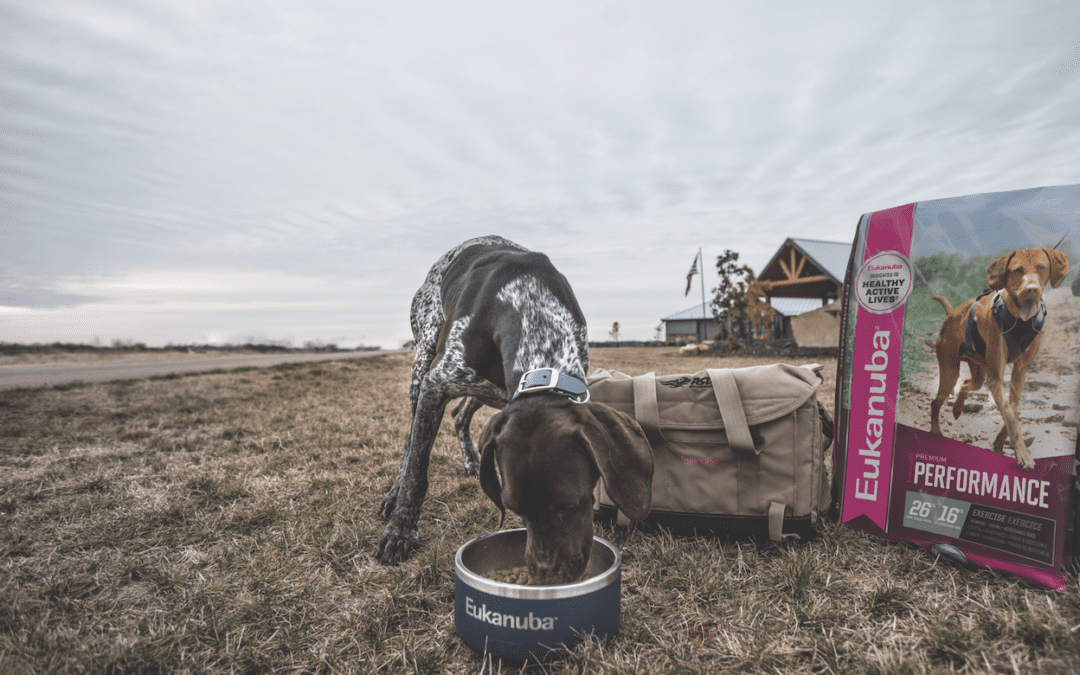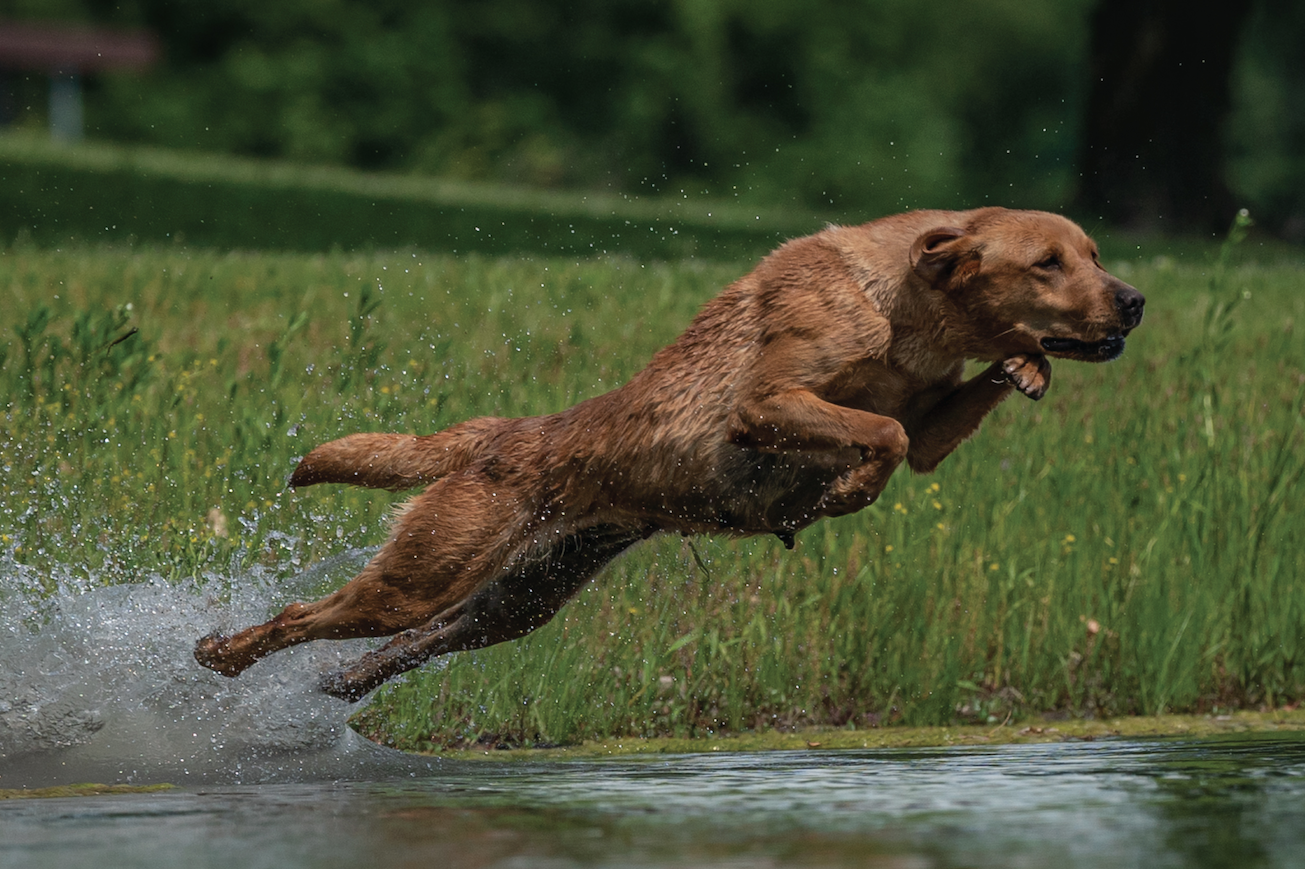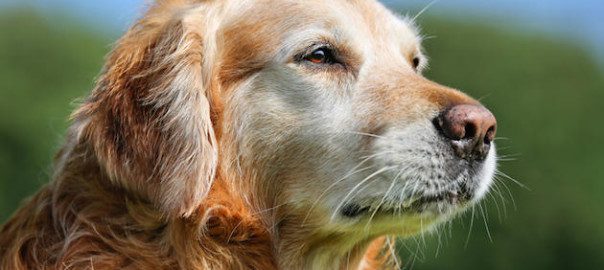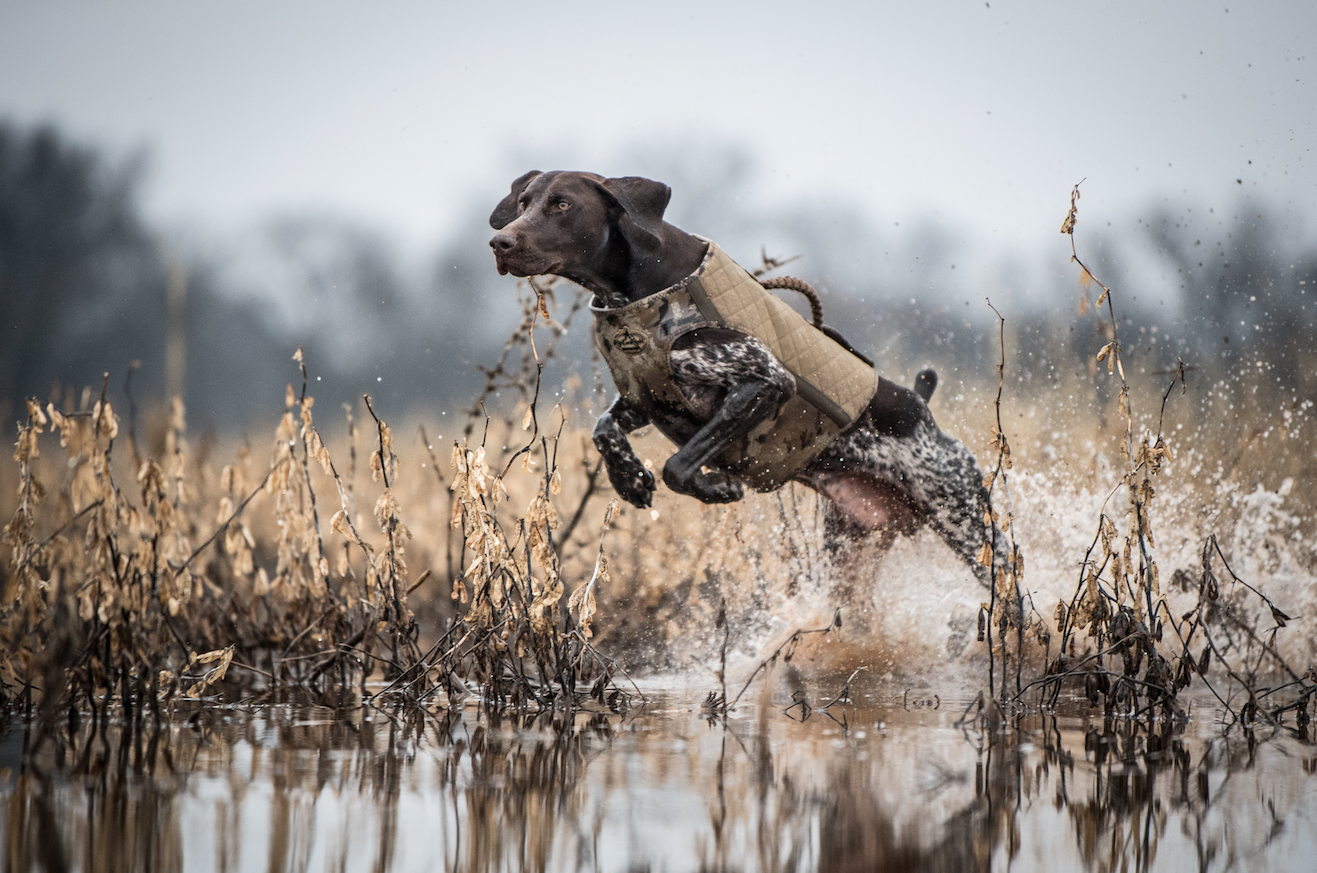Feeding is not as simple as dumping food in a bowl–putting the extra care into your dog’s diet will help keep him healthier to hunt with you.
SPONSORED CONTENT
Feeding your dog might seem simple: Get out the bowl, fill it with food and let Rover scarf it down. However, you might consider putting more thought into your sporting dog’s feeding program if you want him to perform in the field. What you feed, how much you feed and when you feed all drastically affect your dog’s energy levels, physical fitness, and post-hunt recovery. Creating a tailored feeding plan for your dog’s specific needs isn’t rocket science, but it involves more than simply filling up a bowl. Here are the factors you should consider when creating your dog’s feeding program.
Determine Your Dog’s Body Condition Score
A body condition score helps assess body fat independently of body weight. The score helps account for the vast differences in body types among dog breeds since dogs that weigh the same amount can have different body fat amounts due to size differences. It’s easy to do at home and doesn’t involve specialized equipment or precise measurements. You can quickly check if your dog needs to shed a few pounds, put on some weight, or maintain his current level of nutrition.
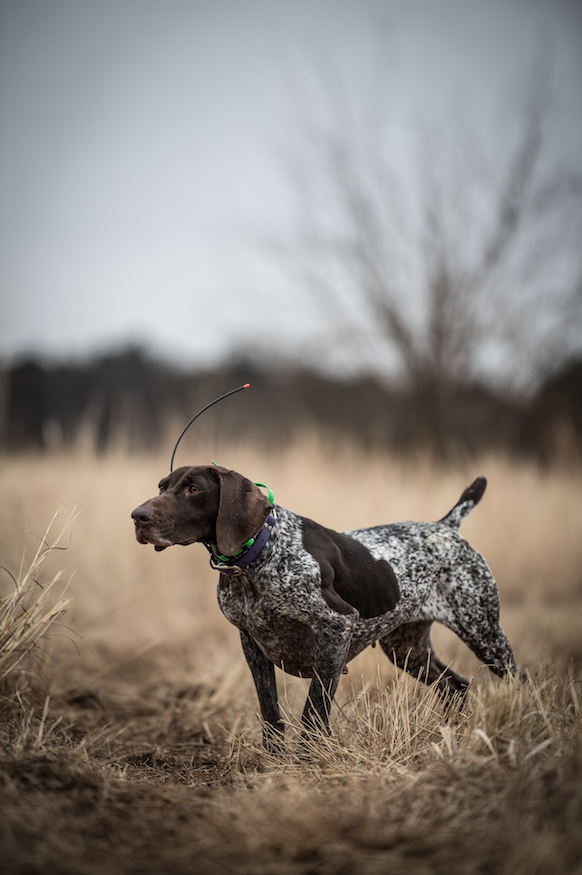 A basic body condition score is determined by checking three areas of your dog—a rib check, profile check, and overhead check.
A basic body condition score is determined by checking three areas of your dog—a rib check, profile check, and overhead check.
- Ribs: Running your finger over your dog’s rib cage, you should be able to easily feel individual ribs. If you need to push in and feel around with your finger, your dog is overweight. Keep in mind that if you can easily see ribs, this is a sign of an underweight dog—but lean breeds such as pointers can be an exception.
- Profile: With your dog standing, look at him from one side (it’s helpful to kneel and get on the same level as your dog). You should see a tuck beginning where the chest ends and the hips begin. If there is a drop at this point, your dog is overweight. If there is a large depression, your dog is likely underweight.
- Overhead: When you look straight down at your dog from above, he should have a visible waist separating the chest and hips. Hip bones that stick out a lot likely mean your dog is too thin. If there are bulges on either side, your dog is overweight.
Considering how your dog scores in these areas will give you a good baseline as you proceed to the following steps. If you have any questions, consult your veterinarian.
Determine Your Dog’s Caloric Needs
Our sporting dogs need to maintain a healthy weight in order to perform at their peak. To help manage your dog’s weight, handlers first need to know their dog’s daily caloric needs. Scientists use the following simple formula.
First, know your dog’s current weight. If you don’t have a scale, this information can often be found on the printout from your last vet visit. Once you know your dog’s weight, divide it by 2.2 to convert it to kilograms. Then, raise the dog’s weight in kilograms to the ¾ power and multiply by 70. The number you arrive at is a good ballpark estimate of your dog’s base caloric needs.
Next, you need to determine his daily and working caloric needs. For light work, multiply the daily caloric needs by 2. For moderate work, multiple by 3. For hard days in harsh conditions (think sled dog), multiply by up to 6. It’s also useful to consult the feeding guidelines for your specific dog food. Manufacturers often use the same formula and do the math for you. Another option is to consult your veterinarian.
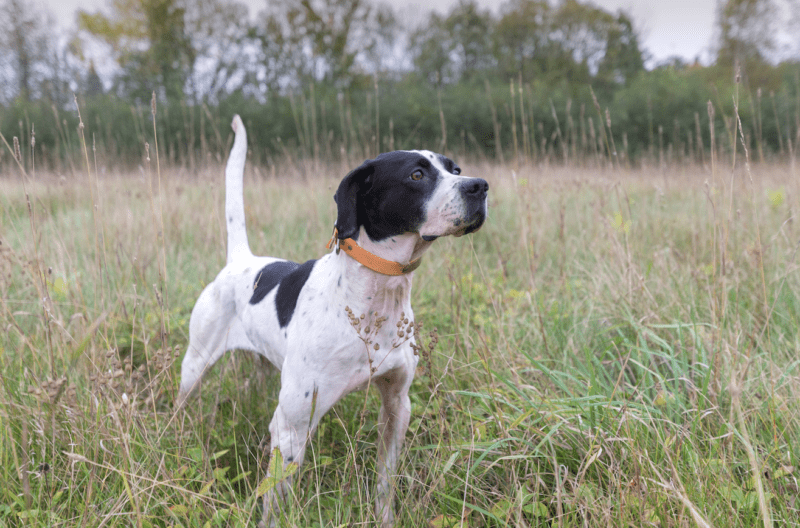
Here’s an example for a 50-pound dog.
- 727 calories (basic daily caloric needs) times 2 = 1,454 calories per day for light work.
- 727 calories times 3 = 2,181 calories for moderate work.
- 727 calories times 6 = 4,362 calories for hard work.
Finally, divide the number of calories your dog needs by the kilocalories (kcals) per cup listed on your dog food packaging. This will give you a very accurate idea of how much to feed your dog based on their activity level.
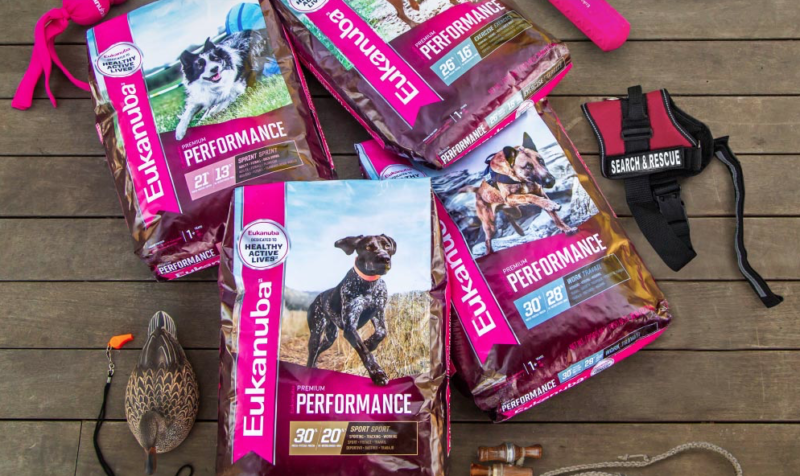
Develop a Feeding Schedule
High-performance athletes don’t eat all their calories in a single sitting. They know that timing their meals is as important as what they are eating. The same applies to your dog. Proper timing is important to ensure the protein, carbohydrates, fat, minerals, and vitamins in your high-quality dog food are fully absorbed.
Hard-working gun dogs should be fed twice a day. In the morning, they should eat one third of their daily feed, at least 3 hours before they exercise or hunt. The gap between eating and running gives them time to digest their food.
The remaining two thirds of their food should be fed in the afternoon or evening, at least 2 hours after their exercise. This 2-hour cool-down before the final feeding allows a dog’s body temperature to return to normal. Your dog should also always have access to clean drinking water.
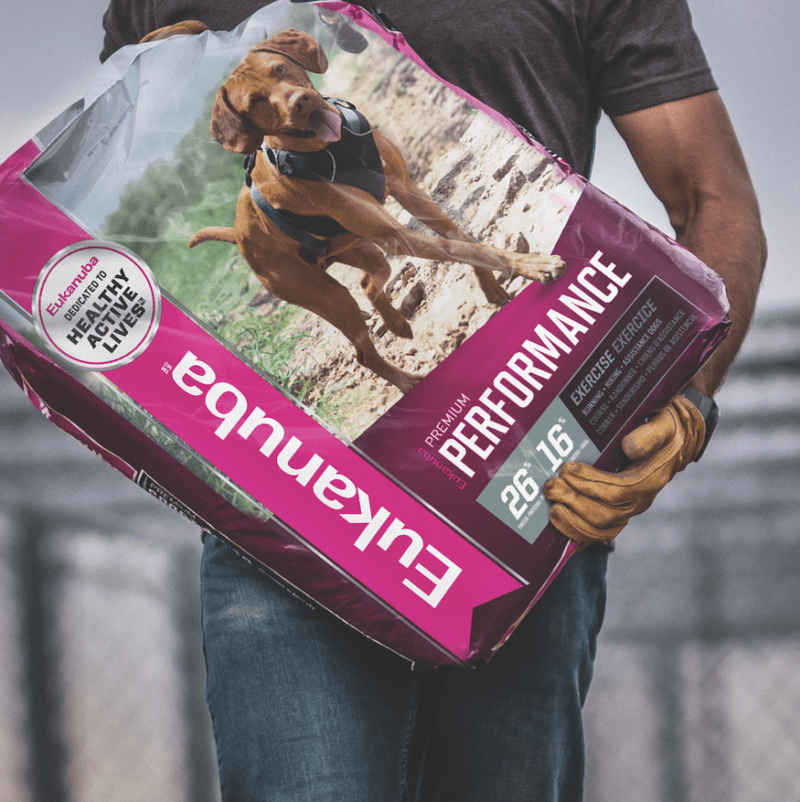 Consider a Performance Dog Food Optimized for Your Dog’s Activity Level
Consider a Performance Dog Food Optimized for Your Dog’s Activity Level
The diet you choose to feed your dog can have a big impact on their ability to perform at their peak. Diets like Eukanuba’s Premium Performance formulas are made from high quality ingredients that are nutritionally dense. They provide an optimal balance of carbohydrates, protein, fat, minerals, vitamins, and antioxidants to help your dog maximize his potential.
Another factor to consider is matching dietary energy sources to your dog’s activity level. Some dogs need fuel for quick, intense bursts of activity which comes from carbohydrates. Others need a diet with more fat for endurance to help them along their half or full day’s work. The range of carbohydrates, protein and fat found in Eukanuba’s Premium Performance line offers a tailored approach to fueling your dog with the energy he needs.
While feeding is not as simple as dumping food in a bowl, putting the extra care into your dog’s diet will help keep him healthier to hunt with you.

